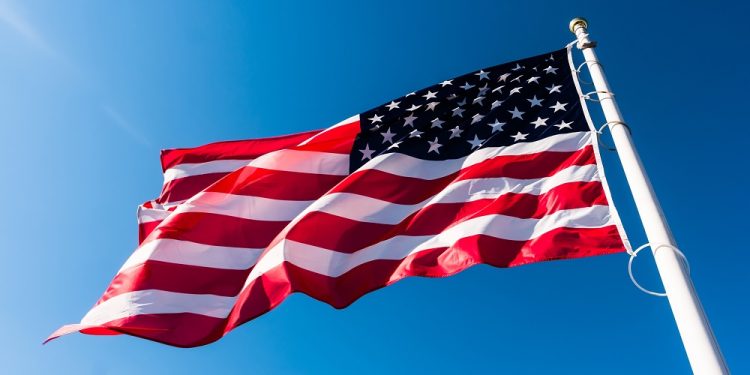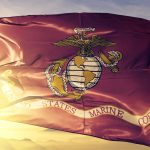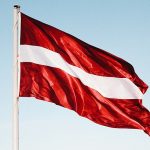
Flag Day (United States)
The official Flag Day observance is on June 14th of each year. Flag Day is a time to respect the flag, celebrate its origin, and honor those who created the first flag. The flag flies over the United States to remind us that we are one nation, a nation under God; to remind us that we are a nation that is indivisible; and to remind us each day of those who fought to protect all who live within this nation.
Written by Francis Bellamy, The Pledge of Allegiance states clearly the pledge to the flag and to the nation: I pledge allegiance to the flag of the United States of America, and to the republic for which it stands, one nation under God, indivisible, with liberty and justice for all.
History
The American Revolutionary War began in 1775 between the colonies of the new world and Great Britain. The war was fought over the issue of taxation. During the early and middle 1700s, Great Britain began taxing the colonies with Acts such as the Sugar Act of 1764, Currency Act of 1764, Stamp Act of 1765, Townshend Acts of 1767, Tea Act of 1773, Coercive Acts of 1774, New England Restraining Act of 1775, and many more. By 1775, the colonies had become frustrated with ‘taxation without representation’ from Great Britain.
On May 10, 1775, the Second Continental Congress met in Philadelphia, Pennsylvania. Shortly thereafter, war broke out between the thirteen colonies and Great Britain. A problem arose on the side of the colonies as there was not a united military force. Each individual colony had its own volunteer military force to battle the small skirmishes.
In order to fight a large war, however, military cohesiveness between all the colonies was needed. On June 15th, 1775, George Washington was appointed the Commander-in-Chief of the military by the Second Continental Congress; Washington’s commission date was June 19th, 1775. “He accepted and served throughout the war without any compensation except for reimbursement of expenses.”
When the war began and because of the lack of unity throughout the colonies, different flags were flown in different sections of the colonies. Some examples included the “‘Rattlesnake Flag’ used by the Continental Navy. Another naval flag had a green pine tree on a white background. Other flags were quite similar to Britain’s Union Jack or incorporated elements of it.”
Flying these different flags, especially the Grand Union Flag, became confusing to the newly formed colonial military. For example, if an American military unit saw another unit carrying the Grand Union Flag, would the other unit be British or American? A new flag was needed and the story told is that Betsy Ross sewed the first United States Flag.
Betsy Ross
On January 1, 1752, Betsy was born Elizabeth Griscom. Her parents, Samuel Griscom and Rebecca James Griscom, had a total of seventeen children with Betsy as the eighth child. As both of Betsy’s parents were of the Quaker faith, she attended Quaker public schools during her educational years. “After completing her schooling, Betsy’s father apprenticed her to a local upholsterer.” As an apprentice, Betsy learned many different types of sewing techniques including upholstery and flag-making.
While working at William Webster’s upholstery shop, Betsy met John Ross who was also an apprentice in the shop. At the age of 21, Betsy and John married in Gloucester City, New Jersey. Unfortunately, John was not a member of the Quaker faith; he was of the Episcopal faith. The Quakers did not allow interfaith marriages, and Betsy was banished from the Quaker church. John and Betsy decided to begin their own upholstery shop.
During this time, John and Betsy Ross attended services at the Episcopal Church of Christ Church. The Christ Church was also the church George Washington and his family attended. The two families became acquaintances while attending the church.
Approximately two years after they were married, John joined a military unit as a guard at an ammunition depot. In 1776, while on guard duty, the depot exploded and John was killed. After John’s death, Betsy inherited John’s share of the upholstery business and decided to keep the shop open. She accepted a variety of businesses which included sewing upholstery, military blankets, military uniforms repair, flag making, and many other sewing opportunities.
According to Betsy’s children and grandchildren, it was in May of 1776 when George Washington, George Ross (her husband’s uncle), and Robert Morris came to visit her in the upholstery shop. They “showed her a rough design of the flag. Although Washington initially favored using a star with six points, [Betsy] Ross advocated for a five-point star, which could be cut with just one quick snip of the scissors, and the gentlemen were won over.”
By July 4, 1776, the Second Continental Congress had finally completed and approved the United States Declaration of Independence. It was almost a year later, on June 14, 1777, when Congress approved the official flag for the United States. The Stars and Stripes flag was the nation’s first official flag.
Stars and Stripes
The Stars and Stripes flag contains the colors red, white, and blue. There is no record known as to why these colors were chosen for the flag. “However, in 1782, the Congress of the Confederation chose these same colors for the Great Seal of the United States and listed their meaning as follows: white to mean purity and innocence, red for valor and hardiness, and blue for vigilance, perseverance, and justice.”
There were, and still are, thirteen stripes on the flag. The colors of the stripes alternate between red and white. Beginning with the red color on top, there are seven red stripes and six white stripes. Located in the upper left corner of the flag is a rectangular-shaped blue section. The first flag contained thirteen white stars within the blue section placed in a circular design. Currently, there are fifty white stars within the blue section placed on a diagonal line design.
As stated previously, the first official flag contained thirteen stars sewn in a circular design within the blue section. There is no definite answer as to why the stars were placed in a circular manner. Some suggest that the circular design was chosen so that all colonies would be considered equal; others suggest the circular design was created as a new constellation such as those found in heaven.
Whatever the reason, the importance of the stars was that each star represented one of the original thirteen colonies. The original thirteen colonies were Connecticut, Delaware, Georgia, Maryland, Massachusetts, New Hampshire, New Jersey, New York, North Carolina, South Carolina, Pennsylvania, Rhode Island, and Virginia. The remaining stars were added as a new state was accepted into the nation.
Flag Day
The originator of Flag Day is Bernard J. Cigrand. Born on October 1st, 1866, in Waubeka, Wisconsin, Cigrand was the last of six children born to Luxembourg immigrants, Nicholas and Susan Cigrand. “Inspired by his father, young Cigrand displayed an early interest in American history. He was a devout patriot with a great love of the flag of our nation.”
While attending dental school, Bernard also taught elementary classes at Stony Hill School located in Waubeka, a small town located approximately 34 miles north of Milwaukee, Wisconsin. Because of his love for the Stars and Stripes flag, Bernard began his quest to create an annual flag day to observe the importance of the American flag. He wrote many articles and spoke at many events pertaining to the importance of celebrating the flag.
In June 1886, he made his first public proposal for the annual observance of the birth of the flag when he wrote an article titled ‘The Fourteenth of June’ in the Old Chicago Argus newspaper. Flag Day celebrations began to be held around the country with the first celebration held in Chicago, Illinois on June 16th, 1894, the third Saturday of the month. More than 300,000 children attended the celebration. During the following years, Flag Day celebrations continued to be observed on the third Saturday of the month of June.
As June 14th was the day the Second Continental Congress officially declared the national flag to be the Stars and Stripes, it was agreed upon by many governors and delegates in the early 1900s that June 14th of each year should be nationally adopted as the official Flag Day of the nation. In 1916, President Woodrow Wilson issued a proclamation establishing Flag Day as an annual national event.
Thirty-three years later, in August of 1949, Harry S. Truman signed into law the National Flag Day observance to occur on June 14th of each year. The National Flag Day observance is not a federal holiday; it is just an observance.
Controversy
Historians throughout the years have not been able to prove that Betsy Ross was the person who created the flag or sewed the flag. As there is no written proof of an invoice or a payment to Betsy Ross for the sewing of the flag, the only information recorded comes from her relatives. Rachel Fletcher, Betsy Ross’s daughter, brought forth information she was told about the events of that day in an affidavit written on July 31, 1871.
Other affidavits were written by Betsy’s granddaughter, Sophia B. Hildebrant, and Betsy’s niece, Margaret Donaldson Boggs. Another person claiming to have created the original design for the flag was Francis Hopkinson, a signer of the Declaration of Independence among other occupations. He requested payment from the Board of Admiralty stating that he was the one who designed the flag.
As there were several people involved in designing the flag, payment was not to be made to only one individual. There is no record of any one person receiving payment for the design of the flag. It appears, perhaps, that Francis Hopkinson designed the rough draft of the original flag with others, including Betsy Ross, making adjustments to the original design. After all design alterations were completed, Betsy Ross then sewed the original Stars and Stripes flag.
Ideas for celebrating Flag Day
Cities and organizations around the country hold parades in observance of Flag Day. Many citizens of the nation fly the Stars and Stripes the entire week of Flag Day. Other organizations hold picnics to include barbecues, games, and play the sport of baseball.








